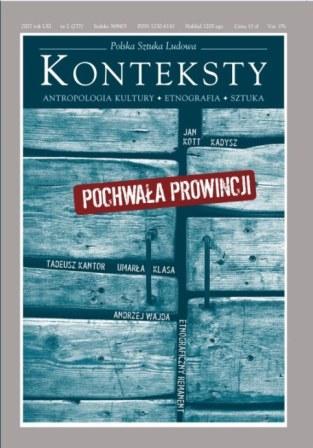Sanktuarium Maryjne w Licheniu: jego architektura i sztuka jako instrument identyfikacji historycznej religijnej i narodowej w postkomunistycznej Pol
The Marian Sanctuary in Lichen: Architecture and Art as an Instrument of Historical, Religious and National Identification in Post-communist Poland
Author(s): Małgorzata OmilanowskaSubject(s): Anthropology
Published by: Instytut Sztuki Polskiej Akademii Nauk
Keywords: anthropology; architecture; Licheń
Summary/Abstract: The Marian sanctuary in Lichen is one of the most impressive phenomena associated with the cult of the Virgin Mary in Europe. Today, it is the second most frequented pilgrimage site in Poland after Jasna Gora in Częstochowa – an immense architectural-town planning-garden premise which emerged in slightly more than thirty years, centred around a gigantic millennial basilica, the largest church in Poland, the seventh largest in Europe and the eleventh in the world, erected in 12 years thanks to voluntary donations. For all practical purposes, the Lichen basilica violates every canon of architectural design, starting with Vitruvius, despite the fact that it indubitably tried to become part of a centuries-old tradition. The basilica’s architecture demonstratively refers to the past but at the same time disavows it by applying a strategy of pretence, characteristic for the category of kitsch. The basilica’s architect, Barbara Bielecka, envisioned her design as part of the centuries-old history of Mediterranean civilisation, to be compared to the only surviving wonder of the ancient world – the Cheops pyramid. She cherished a profound belief that she correctly deciphered and applied Biblical directives concerning the erection of temples. Her projects of the church, and the number of columns, porticos, orifices, chapels, etc., refer to numerology, combining various concepts and interpretations. An essential fragment of the project involves an attempt at evoking Polish national tradition by referring to associations with local nature, art and crafts. The gigantomanic architecture, glossy and featuring garish colours, frequently refers outright to art déco from the turn of the 1920s, while the interiors, full of marble, gilding and crystal chandeliers, bring to mind opulent hotels and exclusive residences straight out of Dallas or Denver, thus turning Lichen into a Catholic Las Vegas; equally justified are associations with Romanian socialist realistic architecture from the “late Ceausescu” era. The phenomenon of Lichen’s popularity consists in the fact that it ideally corresponds to the expectations harboured by droves of pilgrims from all over Catholic Poland. The aesthetic assessment expressed by a pilgrim touring Lichen is based on his personal experience, and within this category it matches his anticipations, becoming a synonym of lavishness and might, as well as evidence of generosity reaching the very boundaries of “the possible”. The popularity of Lichen is supported by a well-devised marketing strategy. The donors are commemorated by means of marble plaques (17 000 are featured on the walls of the lower church!), while the popularisation of Lichen involves, i. a. a system of special “excursions”, a method well-known in Europe and sponsored by firms distributing their products via direct sales.
Journal: Konteksty
- Issue Year: 2008
- Issue No: 02
- Page Range: 129-139
- Page Count: 11
- Language: Polish
- Content File-PDF

